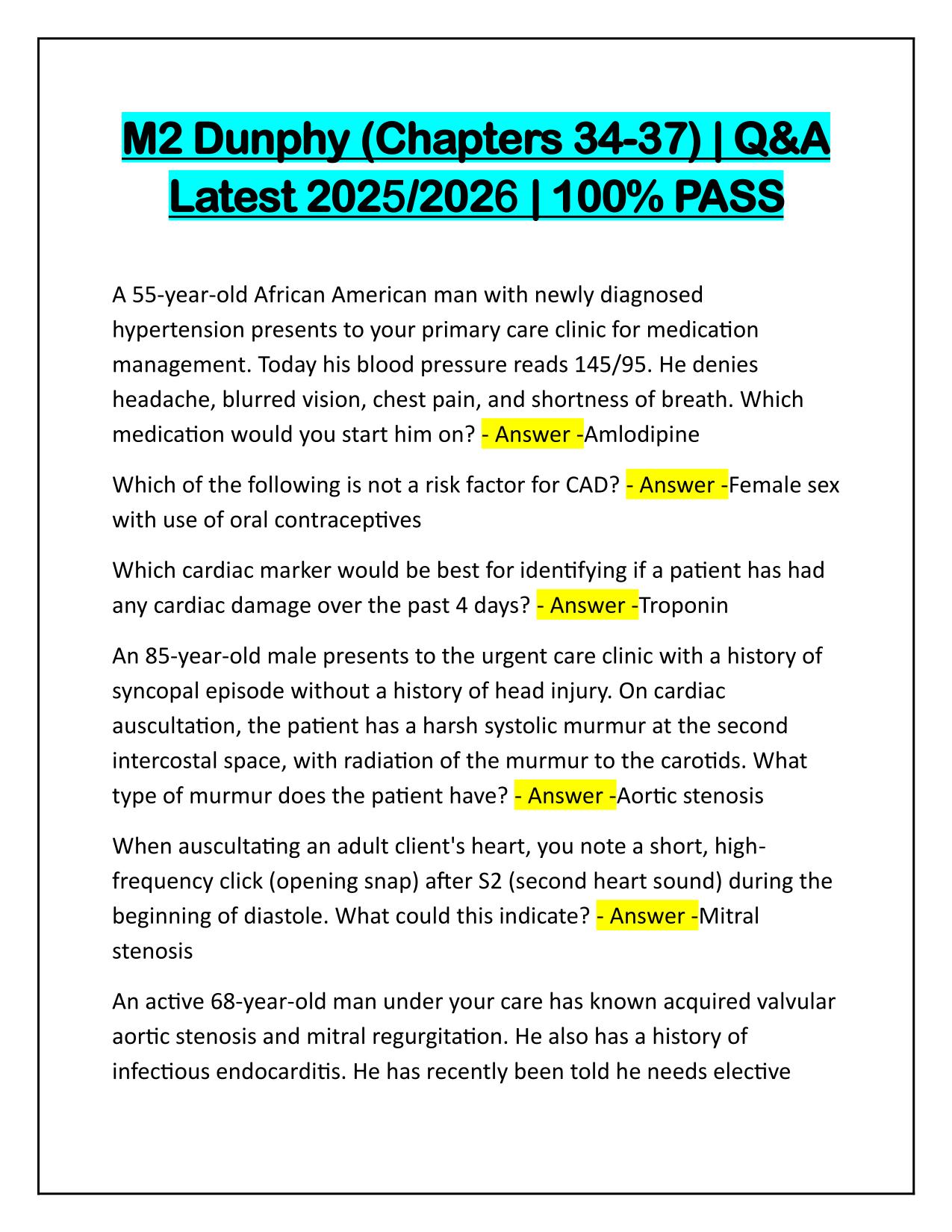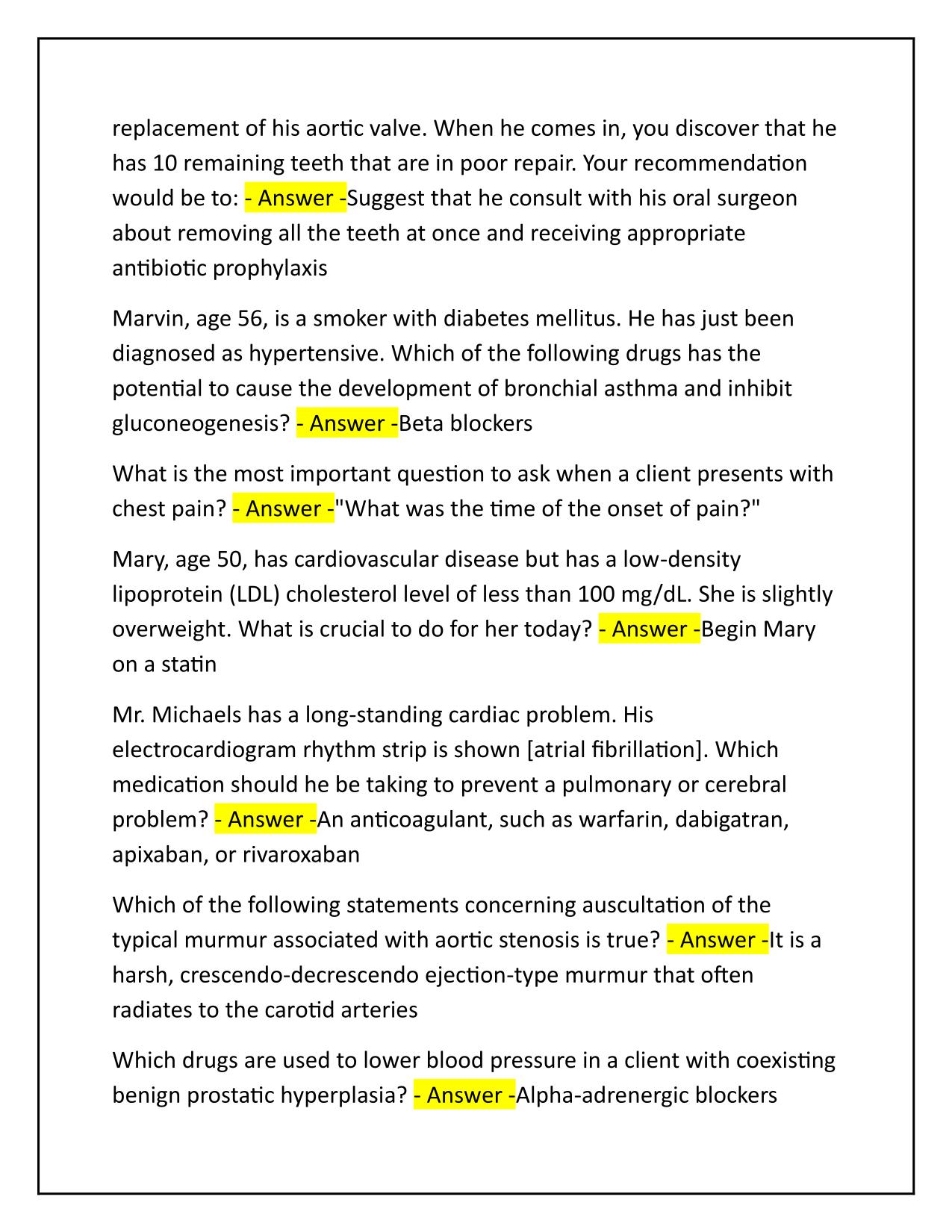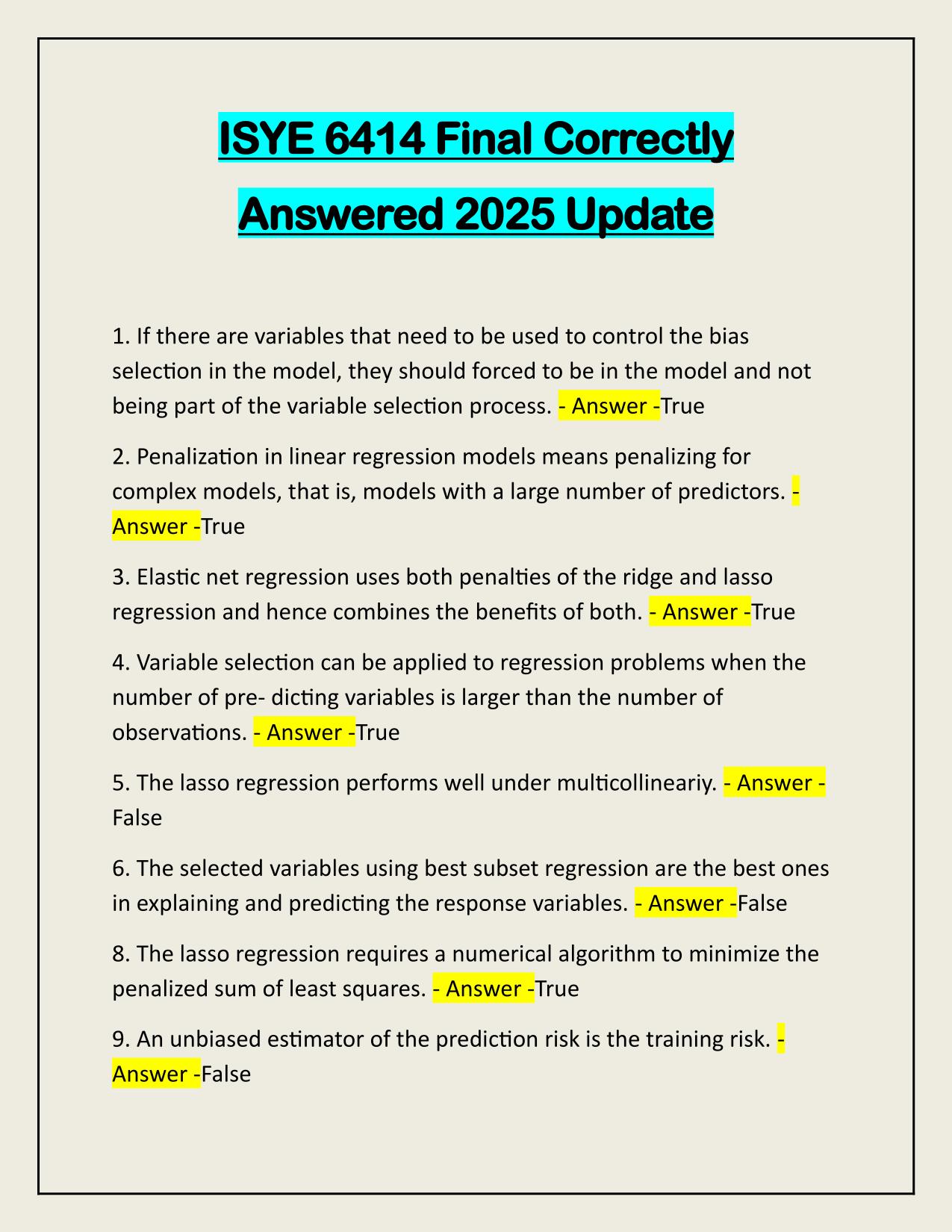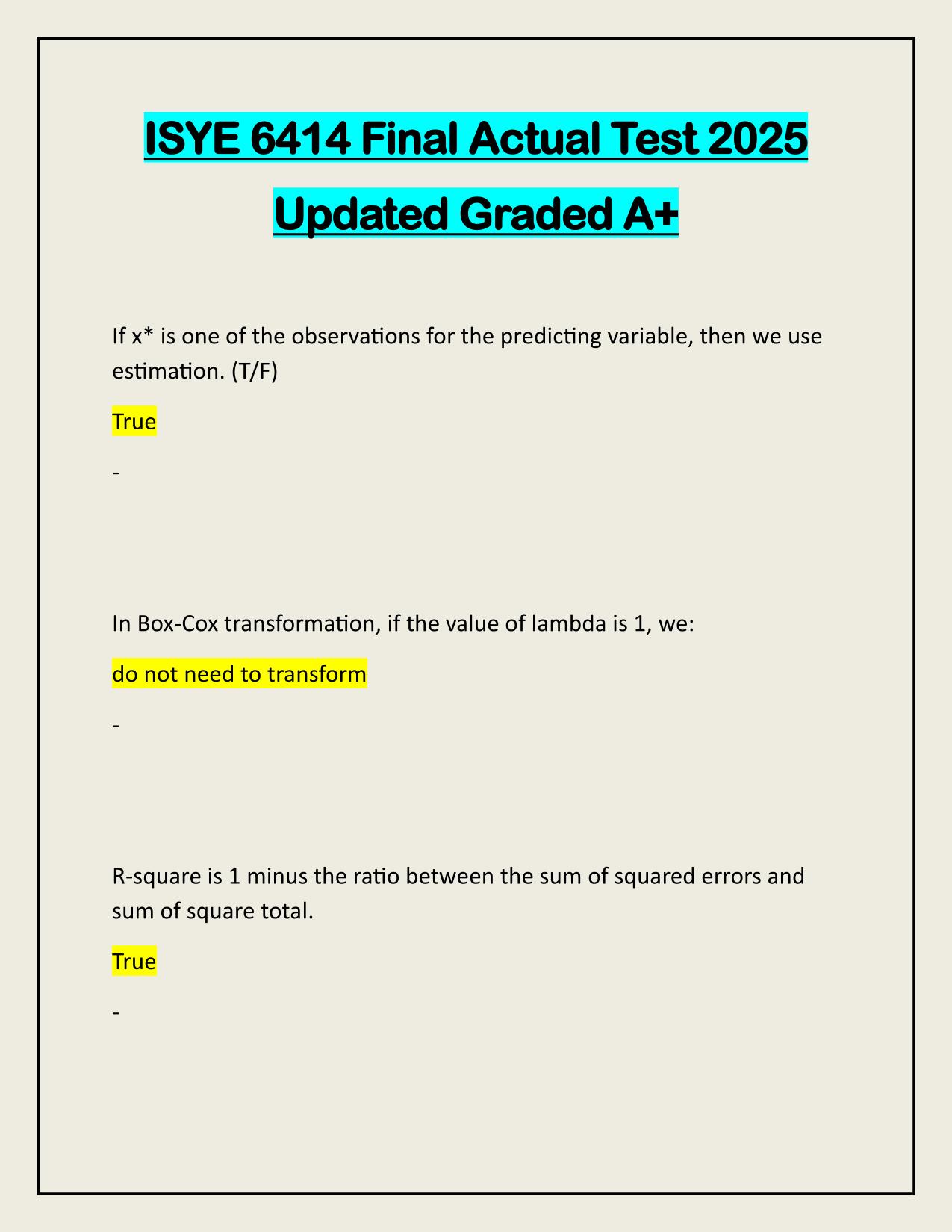M2 Dunphy Chapters 34-37 Correctly Answered
Course:
Dunphy
Institution:
Dunphy
M2 Dunphy Chapters 34-37 Correctly Answered
After purchase, you get:
✅ Instant PDF Download
✅ Verified answer explanations
✅ Refund if not Satisfied
✅ Prepared for 2025/2026 test cycle
Document Information
| Uploaded on: | April 28, 2025 |
| Last updated: | May 12, 2025 |
| Number of pages: | 12 |
| Written in: | 2025/2026 |
| Type: | Exam (elaborations) |
| Contains: | Questions & Answers |
| Tags: | M2 Dunphy Chapters 34-37 Correctly Answered |
Seller Information
AdelineJean
User Reviews (0)
Exam (Elaborations)
$9.50
Add to Cart
100% satisfaction guarantee
Refund Upon dissatisfaction
Immediately available after purchase
Available in Both online and PDF
$9.50
| 0 sold
Discover More resources
Content Preview
M2 Dunphy (Chapters 34-37) | Q&A Latest 2025/2026 | 100% PASS A 55-year-old African American man with newly diagnosed hypertension presents to your primary care clinic for medication management. Today his blood pressure reads 145/95. He denies headache, blurred vision, chest pain, and shortness of breath. Which medication would you start him on? - Answer -Amlodipine Which of the following is not a risk factor for CAD? - Answer -Female sex with use of oral contraceptives Which cardiac marker would be best for identifying if a patient has had any cardiac damage over the past 4 days? - Answer -Troponin An 85-year-old male presents to the urgent care clinic with a history of syncopal episode without a history of head injury. On cardiac auscultation, the patient has a harsh systolic murmur at the second intercostal space, with radiation of the murmur to the carotids. What type of murmur does the patient have? - Answer -Aortic stenosis When auscultating an adult client's heart, you note a short, highfrequency click (opening snap) after S2 (second heart sound) during the beginning of diastole. What could this indicate? - Answer -Mitral stenosis An active 68-year-old man under your care has known acquired valvular aortic stenosis and mitral regurgitation. He also has a history of infectious endocarditis. He has recently been told he needs elective
